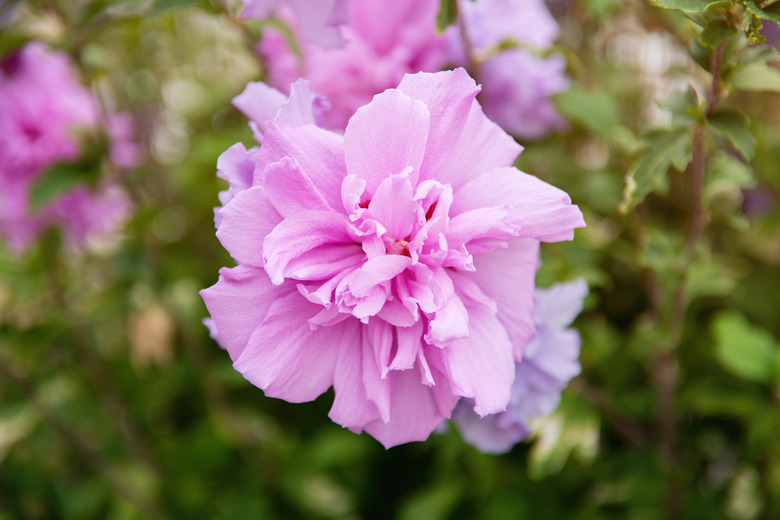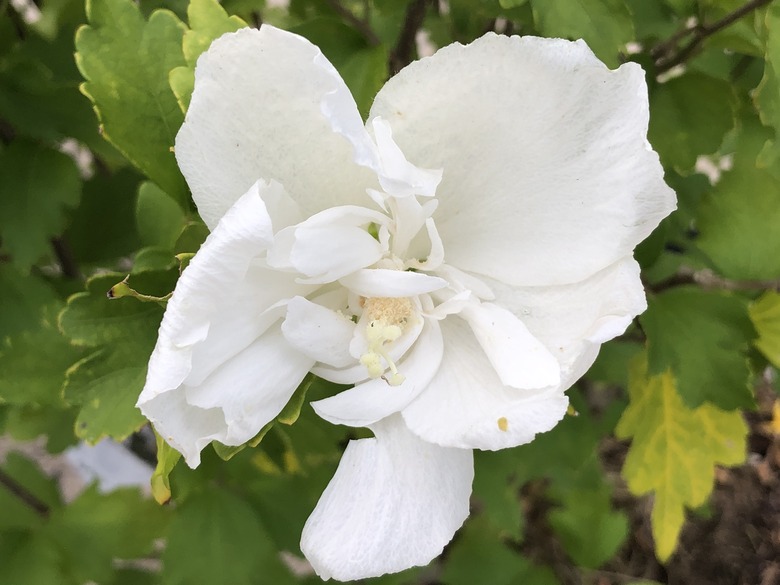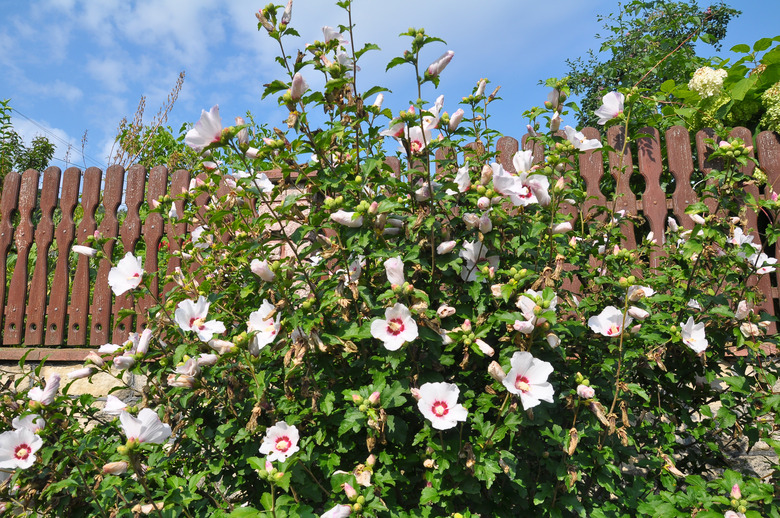The History Of The Rose Of Sharon Bush
Learning the origins and history of the rose of Sharon bush can lead to a whole new appreciation for this fast-growing, flowering shrub. Sometimes called shrub althea or shrub mallow, the rose of Sharon (Hibiscus syriacus) is a deciduous shrub that grows best in USDA plant hardiness zones 5a to 9b. It resembles tropical hibiscus species but will better withstand cold temperatures.
Rose of Sharon shrubs not only make a showy addition to your garden but they also have interesting origins and early history, and they also hold special significance to cultures within Eastern Asia.
Origins of the Rose of Sharon
The scientific name of the rose of Sharon, Hibiscus syriacus, indicates that this species originated in the eastern Mediterranean within Syria. The common "rose of Sharon" name also supports this notion because the Plain of Sharon is located near Syria. However, both names are misleading and inaccurate.
The rose of Sharon actually originated in China and spread throughout Eastern Asia. Rose of Sharon plants are so admired throughout the region that their showy flowers were chosen to be the national flower of South Korea. Called mugunghwa in the Korean language, the flowers symbolize the tenacity of the South Korean people and their wish for prosperity following the Japanese occupation.
Garden History of the Rose of Sharon
Rose of Sharon trees or shrubs entered cultivation in the eighth century, when the species was recorded as a garden plant in Japan. The species spread into the gardens of Korea in the 15th and 16th century and reached Europe in the 16th century as well. Rose of Sharon shrubs even found their way into the gardens of Colonial-era America in the 18th century.
Rose of Sharon Cultivars
Early rose of Sharon types had an appearance very similar to hollyhocks (Alcea spp.), a common annual garden flower noted for its large, open flowers. Modern cultivars often switch things up with double flowers and unusual flower colors.
**White Chiffon:** One white-flowered variety is White Chiffon® (Hibiscus syriacus 'Notwoodtwo'), which grows best in USDA zones 5 to 8. It sports single or double flowers with a crisp white color and a graceful upright growth habit that can reach 8 to 10 feet in height.
**Sugar Tip:** Another striking modern cultivar is Sugar Tip® (Hibiscus syriacus 'America Irene Scott'). It features pale pink blooms with double or triple petals, which give the flowers a fluffy appearance. Gardeners in USDA hardiness zones 5 to 8 can grow this shrub at home.
**Lil' Kim:** A single-flowered rose of Sharon variety with modern origins is Lil' Kim® (Hibiscus syriacus 'Antong Two'), a small variety that reaches just 3 to 4 feet in height. It grows best in USDA zones 5 to 9 and is slightly more heat-tolerant than other cultivars. The white or pale pink flowers feature a striking, dark red eye at the base of each petal.
Growing the Rose of Sharon
All rose of Sharon varieties can be grown from nursery transplants or started from stem cuttings in spring. Some varieties will also grow well from seed, although many modern cultivars may not reproduce well from seed, or the flowers may not resemble the original plant.
Growing Conditions
Rose of Sharon shrubs will tolerate a range of garden conditions, but providing the best possible planting spot will help them bloom better and live a longer, healthier life.
- **Grow rose of Sharon shrubs in full sun with partial shade in hotter climates.** Direct sun is needed for abundant flowering, but hot midday sun can scald the leaves—so choose a location with morning sun.
- Choose a growing location with moderately fertile, well-draining soil. Heavy soil and poor, sandy soil are both challenging for rose of Sharon shrubs.
- Choose a growing location that is large enough to accommodate the shrub's mature size, which varies among cultivars.
Tip
Rose of Sharon shrubs are somewhat drought tolerant once established, but they will bloom better and form more flower buds when given regular watering and routine care.
Care Suggestions
Rose of Sharon shrubs are somewhat high maintenance even when grown under good conditions. However, your efforts will be rewarded with plenty of flowers to attract hummingbirds, bees and other pollinators to your garden during the summer months.
- Water rose of Sharon hibiscus whenever the soil feels mostly dry below the surface. Provide 1 to 2 inches of water each week during the summer months. Stop watering during the winter months.
- Feed once a week using 1/4 teaspoon of fertilizer diluted in 1 gallon of water. Use a low-phosphorus fertilizer, because too much phosphorus can damage rose of Sharon shrubs. Start feeding in early spring when new growth appears and stop feeding in autumn and winter.
- Spread a 2- to 3-inch-thick layer of lightweight mulch over the plant's root ball and extending out to the edges of the canopy, which will help hold moisture in the soil.
Warning
Rose of Sharon shrubs can self-sow and become weedy, so it is a good idea to prune off the old flowers before they set seed, which is called deadheading.



